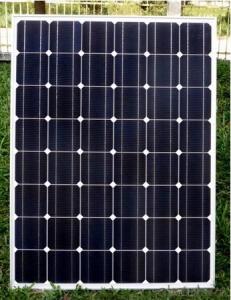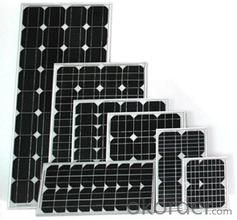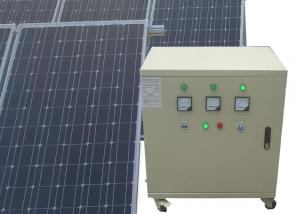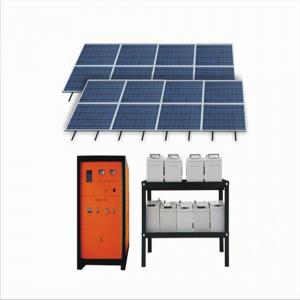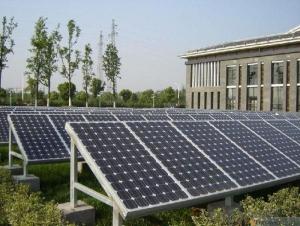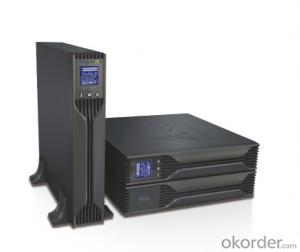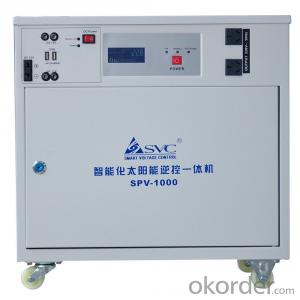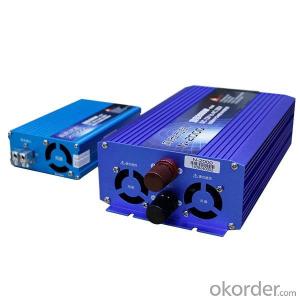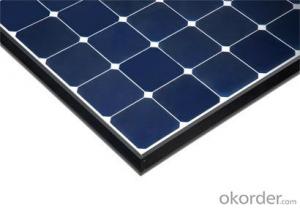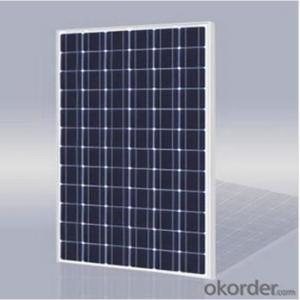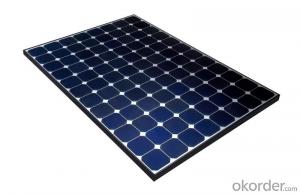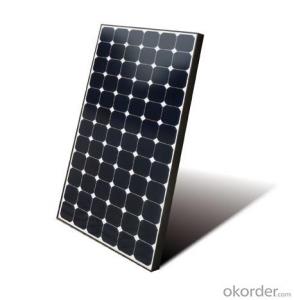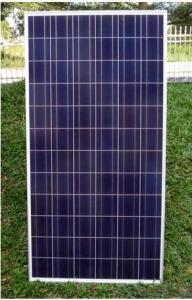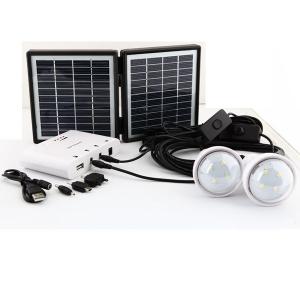Active and Passive Solar Energy Systems - CNBM On Grid System 6000W with Certificate UL TUV CE
- Loading Port:
- Shanghai
- Payment Terms:
- TT OR LC
- Min Order Qty:
- 100 watt
- Supply Capability:
- 1000 watt/month
OKorder Service Pledge
OKorder Financial Service
You Might Also Like
Specification
CNBM On Grid System 6000W with Certificate UL TUV CE
Product description
They range from small residential and commercial rooftop systems to large utility-scale solar power stations. Unlike stand-alone power systems, a grid-connected system rarely includes an integrated battery solution, as they are still very expensive. When conditions are right, the grid-connected PV system supplies the excess power, beyond consumption by the connected load, to the utility grid.
Connection of the photovoltaic power system can be done only through an interconnection agreement between the consumer and the utility company. The agreement details the various safety standards to be followed during the connection.[4]
Systems such as Net Metering and Feed-in Tariff which are offered by some system operators, can offset a customers electricity usage costs. In some locations though, grid technologies cannot cope with distributed generation feeding into the grid, so the export of surplus electricity is not possible and that surplus is earthed.
Grid-connected PV systems are comparatively easier to install as they do not require a battery system.[1][6]
Grid interconnection of photovoltaic (PV) power generation systems has the advantage of effective utilization of generated power because there are no storage losses involved.[7]
A photovoltaic (in short PV) module is a packaged, connected assembly of typically 6×10 solar cells. Solar Photovoltaic panels constitute the solar array of a photovoltaic system that generates and supplies solar electricity in commercial and residential applications. Each module is rated by its DC output power under standard test conditions, and typically ranges from 100 to 365 watts. The efficiency of a module determines the area of a module given the same rated output – an 8% efficient 230 watt module will have twice the area of a 16% efficient 230 watt module. There are a few commercially available solar panels available that exceed 22% efficiency[1] and reportedly also exceeding 24%.[2][3] A single solar module can produce only a limited amount of power; most installations contain multiple modules. A photovoltaic system typically includes a panel or an array of solar modules, a solar inverter, and sometimes a battery and/or solar tracker and interconnection wiring.
The price of solar power, together with batteries for storage, has continued to fall so that in many countries it is cheaper than ordinary fossil fuel electricity from the grid (there is "grid parity").[4]
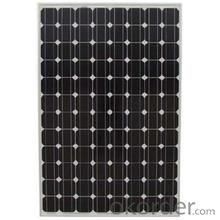
Application
Industrial
Commercial
Residential
Feature
Residential, grid-connected rooftop systems which have a capacity more than 10 kilowatts can meet the load of most consumers.[2] They can feed excess power to the grid where it is consumed by other users. The feedback is done through a meter to monitor power transferred. Photovoltaic wattage may be less than average consumption, in which case the consumer will continue to purchase grid energy, but a lesser amount than previously. If photovoltaic wattage substantially exceeds average consumption, the energy produced by the panels will be much in excess of the demand. In this case, the excess power can yield revenue by selling it to the grid. Depending on their agreement with their local grid energy company, the consumer only needs to pay the cost of electricity consumed less the value of electricity generated. This will be a negative number if more electricity is generated than consumed.[3] Additionally, in some cases, cash incentives are paid from the grid operator to the consumer.
Packaging
With carton and box
- Q: Can solar energy systems be installed on historic buildings?
- Yes, solar energy systems can be installed on historic buildings. However, it is important to consider the sensitivity of the building's preservation and design. Careful planning and collaboration with historic preservation experts are required to ensure that the installation does not compromise the architectural integrity of the historic structure.
- Q: What is the cost of installing a solar energy system?
- The cost of installing a solar energy system can vary depending on various factors such as the size of the system, location, and specific requirements. On average, the cost can range from $10,000 to $30,000 or more. However, there are also various incentives, tax credits, and financing options available that can help offset the initial cost. It is recommended to consult a solar energy provider or contractor to get an accurate estimate based on your specific needs and circumstances.
- Q: How does solar energy compare to other renewable energy sources like wind or hydro power?
- Solar energy, like wind and hydro power, is a crucial renewable energy source. However, it has its own unique advantages and disadvantages when compared to other renewables. Solar energy is abundant, easily accessible, and can be harnessed almost anywhere. While wind power may have the potential to generate more electricity, solar energy is more consistent and reliable. Similarly, hydro power is more efficient in terms of energy production, but it is limited by geographical constraints. Ultimately, the choice between these renewable sources depends on specific circumstances, such as location, available resources, and energy demands.
- Q: What is the impact of dust storms on solar panels?
- Solar panels can be significantly affected by dust storms. The build-up of dust and debris on the panel surface can block sunlight, resulting in reduced efficiency and electricity generation. Dust particles act as a barrier, preventing sunlight from converting into electricity, leading to decreased power output and overall performance. Moreover, physical damage can also occur during dust storms. The panel surfaces can be scratched or chipped by abrasive particles carried by strong winds, causing long-term degradation and reduced efficiency. Additionally, the accumulation of dust and debris can raise the panel temperature, further decreasing efficiency. To mitigate the impact of dust storms, regular cleaning and maintenance are crucial. Periodic cleaning removes dust and debris, helping to maintain efficiency and maximize electricity generation. Furthermore, installing tilt systems or self-cleaning technologies can effectively prevent or shed off dust accumulation, minimizing the impact of dust storms. In conclusion, dust storms can negatively affect solar panels, reducing efficiency and potentially causing physical damage. However, proper maintenance and cleaning practices can minimize these effects, allowing solar panels to continue generating clean and sustainable energy.
- Q: How does a solar panel convert sunlight into electricity?
- A solar panel converts sunlight into electricity through the photovoltaic effect. When sunlight hits the solar panel's surface, it excites the electrons in the panel's semiconductor material, creating an electric current. This current is then captured and converted into usable electricity for powering various devices or stored in batteries for later use.
- Q: Can a solar energy system be used to heat water?
- Certainly! A solar energy system has the capability to warm water. Solar water heaters utilize the energy from the sun to heat water for a multitude of purposes, including household usage, swimming pools, and industrial operations. These systems usually comprise solar collectors that absorb the sun's radiation and transmit the heat to a fluid. This fluid is subsequently circulated to warm the water contained in a tank. Solar water heaters are highly efficient, economical, and eco-friendly substitutes for conventional water heating techniques. They have the potential to substantially decrease energy expenses and emissions of greenhouse gases, all while ensuring a consistent supply of hot water throughout the year.
- Q: Can solar energy systems be used in areas with limited access to healthcare?
- Indeed, areas with limited access to healthcare can definitely benefit from the use of solar energy systems. In fact, the utilization of solar energy systems can play a vital role in enhancing healthcare services in such areas. Solar energy systems have the capability to provide power to medical facilities, including hospitals, clinics, and health centers, ensuring a consistent and uninterrupted supply of electricity. This becomes particularly significant in remote or off-grid locations where the availability of power from the main grid is scarce or non-existent. By offering a sustainable and autonomous energy source, solar systems can help overcome the obstacles caused by unreliable or inadequate power supply, which often hinder the provision of healthcare services. The use of solar energy can enable the powering of essential medical equipment, such as diagnostic tools, laboratory machines, and refrigeration units for storing vaccines and medications. This empowers healthcare providers to deliver crucial services, including diagnostics, treatment, and emergency care, even in areas where conventional power sources are limited. Additionally, solar-powered medical equipment can be easily transported and mobile, facilitating healthcare workers' access to remote areas and allowing them to provide primary healthcare services to underserved populations. Furthermore, solar energy systems can be employed to provide lighting in healthcare facilities, especially in areas where electricity is scarce or unavailable during nighttime. Sufficient lighting is vital for performing medical procedures, conducting surgeries, and delivering babies safely. Consequently, solar-powered lighting systems can contribute to the overall well-being of healthcare workers, enabling them to work in well-illuminated and comfortable environments. Moreover, solar energy systems can power communication devices, such as phones and radios, empowering healthcare workers to connect with experts and access medical information, even in areas with limited connectivity. This can facilitate telemedicine initiatives, where healthcare professionals can conduct remote consultations and diagnosis, further enhancing healthcare access in areas with limited healthcare infrastructure. In conclusion, solar energy systems provide a sustainable and dependable solution for powering healthcare facilities and enhancing healthcare services in areas with limited access to healthcare. By supplying electricity to medical equipment, lighting, and communication devices, solar systems can contribute to improved healthcare outcomes, increased efficiency, and enhanced accessibility to vital medical services in underserved communities.
- Q: Can solar energy systems be installed in areas with extreme weather conditions?
- Yes, solar energy systems can be installed in areas with extreme weather conditions. However, the performance and durability of the system may vary depending on the specific weather conditions. Proper design, installation, and maintenance can help ensure that solar systems can withstand extreme weather events such as hurricanes, snowstorms, or high winds. Additionally, advancements in solar technology have made it possible to adapt systems to various weather conditions, making solar energy a viable option in areas with extreme weather.
- Q: What happens to excess solar energy produced?
- Excess solar energy produced is typically stored or fed back into the grid. There are various methods to store excess solar energy, such as using batteries, thermal energy storage systems, or converting it into hydrogen fuel. Battery storage systems are commonly used in residential or commercial solar installations, where excess energy can be stored in batteries during the day and used at night or during cloudy periods. In addition, excess solar energy can be fed back into the grid through a process known as net metering or feed-in tariffs. Net metering allows solar energy system owners to receive credit for the excess energy they produce, which can be used to offset the energy they consume from the grid during times when their solar system is not producing enough energy. Feed-in tariffs, on the other hand, provide financial incentives for solar energy producers to sell their excess energy back to the grid at a predetermined rate. By storing or feeding back excess solar energy, we can ensure that the solar power generated is not wasted and can be utilized efficiently, contributing to a more sustainable and renewable energy future.
- Q: What is a solar thermal system?
- A solar thermal system is a type of technology that utilizes the sun's energy to heat water or air for various applications, such as space heating, water heating, or even electricity generation. It typically consists of solar collectors, which absorb sunlight and convert it into heat, and a system to store and distribute this thermal energy for use when needed.
Send your message to us
Active and Passive Solar Energy Systems - CNBM On Grid System 6000W with Certificate UL TUV CE
- Loading Port:
- Shanghai
- Payment Terms:
- TT OR LC
- Min Order Qty:
- 100 watt
- Supply Capability:
- 1000 watt/month
OKorder Service Pledge
OKorder Financial Service
Similar products
Hot products
Hot Searches
Related keywords
